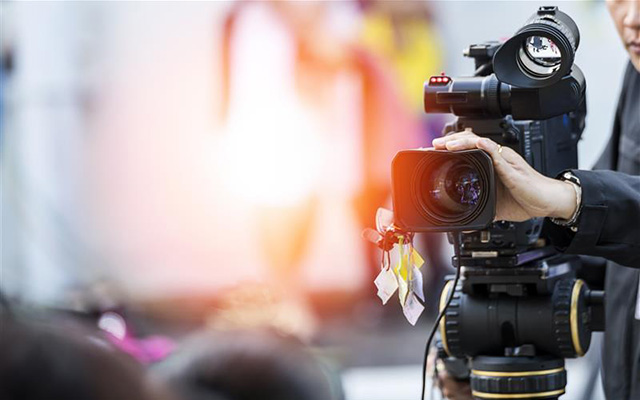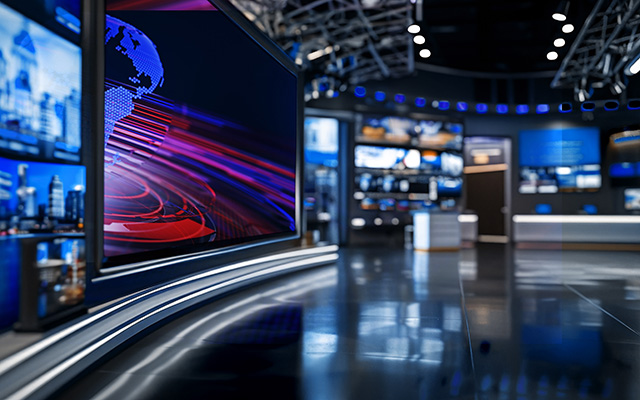dvLED in Broadcast: Meeting the Demands of Modern Studios

With virtual production, hybrid workflows, and rising sustainability demands, broadcast studios are undergoing a fundamental shift in how they operate, and what’s expected of them. Legacy display systems often fall short in performance, flexibility, and efficiency, prompting studios to rethink how their visual infrastructure supports modern content creation.
You can delve deeper into the emerging trends and challenges shaping the broadcast industry, and find out how dvLED technology is delivering more effective, future-ready solutions in our whitepaper.
WHITEPAPER: How dvLED Technology is Transforming the Future of TV Studios
Bringing Broadcast Studios Up to Speed with dvLED
Delivering high-impact visuals in increasingly complex production environments, often around the clock, is placing greater pressure on legacy studio infrastructure. Whether incorporating virtual sets, augmented graphics, or hybrid workflows, studios must produce seamless, camera-ready content that meets both creative and operational demands.
Display systems are central to meeting these expectations, but many studios are faced with common challenges as they work with legacy systems: moiré patterns, glare, limited viewing angles, colour mismatches between camera feeds, and high energy consumption. These challenges restrict flexibility, degrade on-screen quality, and increase long-term maintenance costs.
From tighter camera integration to long-term energy efficiency, dvLED is fast becoming essential for staying competitive in today’s rapidly evolving broadcast environment.
Why dvLED Is Raising the Bar for Studio Display
dvLED offers a host of performance advantages that align directly with the demands of modern studio production. Its modular, bezel-free format enables seamless video walls with ultra-fine pixel pitches for exceptional image fidelity even at close range.

Unlike traditional displays, dvLED delivers deep blacks, consistent brightness, and colour uniformity across wide viewing angles - crucial in multi-camera environments. Flip-Chip SMD dvLED, in particular, offers lower heat output and power usage, helping reduce cooling requirements and support sustainability targets. High refresh rates and synchronised calibration tools help reduce moiré and ensure visuals look as good on camera as they do in the studio.
From curved or corner installations to immersive backdrops and virtual sets, dvLED gives studio designers greater creative freedom, while enhancing operational reliability with long lifespans and modular serviceability. As dvLED adoption accelerates across the broadcast sector, broadcasters are not just upgrading display systems, they’re rethinking what their studios can achieve.
Trusted Technology for Demanding Studios
Sharp/NEC has long been a trusted partner in mission-critical environments. Our FA and FE Series displays deliver exceptional visual performance and resilience, with pixel pitch options ranging from 0.9mm to 2.5mm. The FA Series includes redundant power and data systems to safeguard on-air continuity.
But Sharp/NEC’s approach goes beyond hardware. We offer comprehensive end-to-end support, from initial consultation and specification through to installation and post-deployment service, ensuring seamless integration with your broader infrastructure and future-proof performance.
Sharp/NEC solutions are already making an impact in leading studios across Europe. The media and entertainment group TVN uses a Sharp LD-FA123 dvLED wall with a 1.2mm pixel pitch to backdrop its modern, curved studio set demonstrating the technology’s versatility, image quality, and camera-ready performance in real-world conditions.
For studios navigating the shift toward virtual and hybrid production models, investing in the right display infrastructure is critical to success.

TVN uses a curved Sharp LD-FA123 to backdrop its broadcast studio
Ready to explore what dvLED can do for your studio?
Download our whitepaper for expert insight into key market trends, and how Sharp/NEC’s dvLED display solutions are meeting the demands of modern broadcasting.
WHITEPAPER: How dvLED Technology is Transforming the Future of TV Studios
